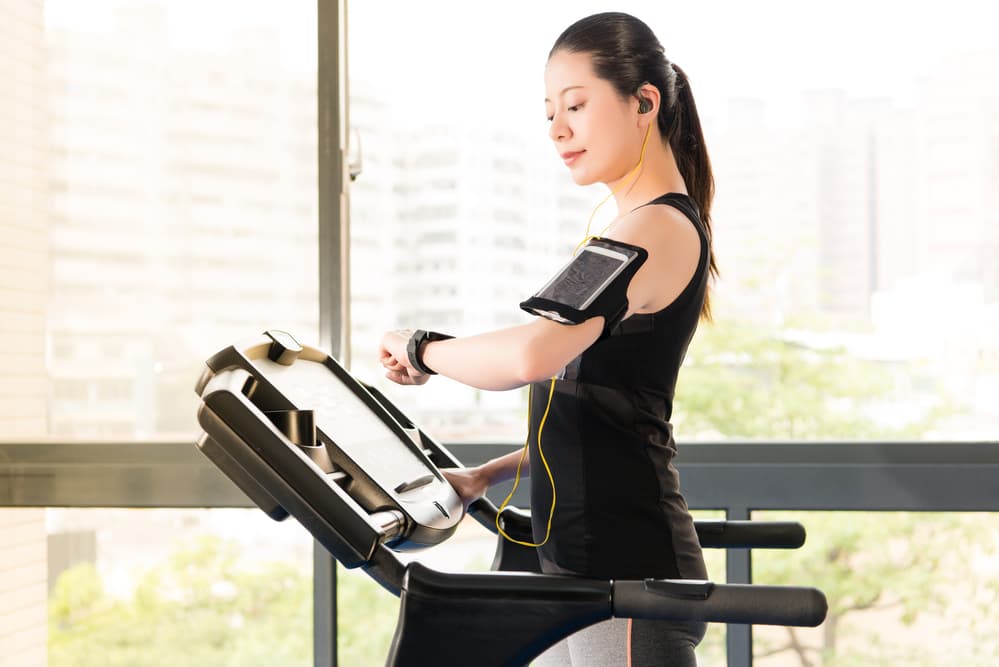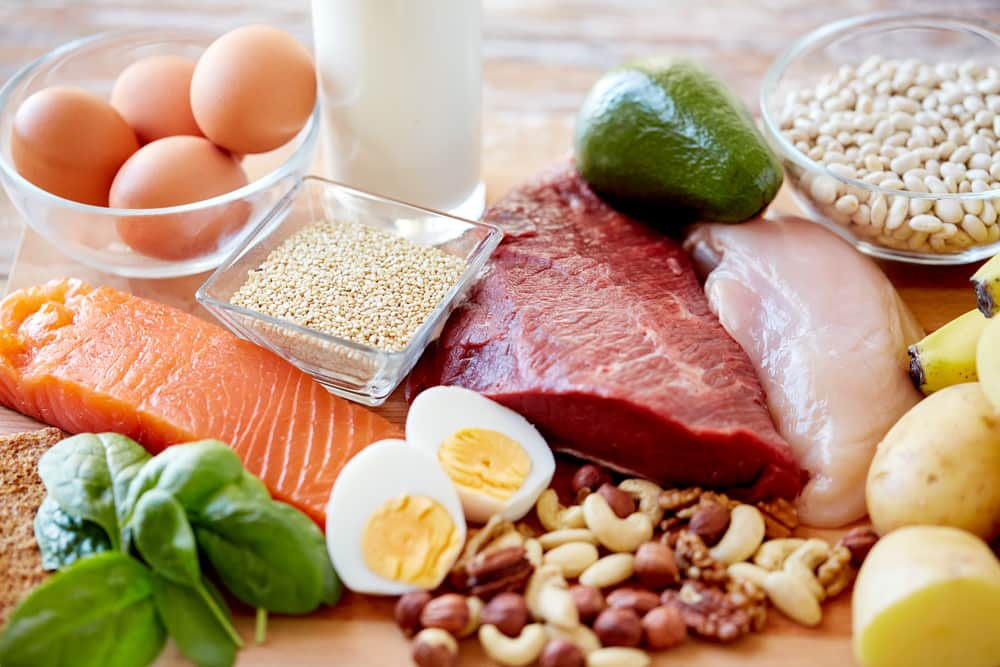While proper nutrition is essential when working out, the timing of your meals is equally crucial. So, if you’re exercising with a treadmill, how long after eating can you use it?
Health experts recommend having your running exercises 30-60 minutes after a snack and 1.5-3 hours after a light meal. Either option should fuel your treadmill workouts without causing gastrointestinal issues.
However, these are only general guidelines.
Other factors, like workout intensity and meal composition, are also worth considering.
Keep reading to learn more about these factors and the food items you should eat or avoid when exercising.
What Happens if You Exercise too Soon after Eating?
Eating before exercise, like running on a treadmill, ensures you have ample energy.
However, treadmill use right after eating can lead to various side effects.
Some common issues are:
- gastrointestinal problems like acid reflux, bloating, diarrhea, heartburn, nausea, stomach cramps and vomiting
- post-meal fatigue or sluggishness potentially due to physiological alterations and blood sugar fluctuation
In a 2014 study, researchers concluded that endurance athletes, like runners and cyclists, commonly complain about gastrointestinal symptoms during exercise.
Post-meal exercise side effects vary from person to person, though.
And dietitians explained that these happen when blood and energy go to your muscles during exercise, which disrupts digestion and causes problems.
How Long Should You Wait After Eating Before Treadmill Use?
Health experts say that the total emptying of the stomach takes about 2-5 hours, and complete digestion takes up to 73 hours.
Based on these data, a 2008 study recommends that people can exercise:
- 30-60 minutes after a snack
- 1-2 hours after a light meal
- 3-4 hours after a heavy meal
That means you can safely use the treadmill at 5-6 pm after eating lunch around 1-2 pm or a snack around 4 pm.
Morning people can also start their treadmill workouts a few hours after a light breakfast.

What Other Factors Affect Meal and Exercise Timing?
Keep in mind that the time guidelines mentioned above are only general suggestions.
Your waiting time may be shorter or longer than these based on the following factors.
Food Type and Meal Size
Some food items, especially those high in fat, fibre and protein, take a long time to digest.
So, you might want to skip them if you plan to use the treadmill after eating.
How much you eat also affects digestion time. The larger the meal, the longer the waiting time before exercise.
Exercise Intensity
Previous research findings showed that strenuous exercises among athletes potentially cause gastrointestinal symptoms.
That means you should be mindful of your treadmill workout intensity when timing sessions with your meals.
For instance, HIIT treadmill workouts likely need a longer waiting time after eating than low-intensity, steady-state exercises.
Physiology and Health Status
Factors like age, gender and health conditions can affect how fast we digest food and how our bodies respond to activity during digestion.
For instance, a 2014 study concluded that women generally take a longer digestion time than men.
Another research also found that gastrointestinal ability decreases with age, like food disintegration and transit.
What are the Best Foods to Eat Before Using the Treadmill?
A balance between your food choice and exercise is crucial when deciding what to eat.
For instance, long and intense workouts naturally require a main meal with carbs, proteins and fats.
Light snacks are excellent for workouts of 1 hour or less.
Healthy nibbles are also good if you do not want to wait long before you can hit the treadmill.
Here are a few options you can mix and match:
| PRE-WORKOUT MEAL COMPONENTS (with 1-4 hours of waiting time) | PRE-WORKOUT SNACK COMPONENTS (with 30 minutes to 2 hours of waiting time) |
| Complex carbs from whole grains, beans and vegetables for energy | Simple carbs like applesauce, crackers, fruit leather and raisins or dates |
| Proteins from lean meats, fish and dairy for muscle growth and recovery | Fast-digesting carbs and proteins like toast/banana with peanut or almond butter, cereal/oatmeal with milk, and energy bar |
| Fats from seeds, nuts and fish for fuelling endurance training | Carbs with some proteins like pita bread with hummus, fruit parfait or smoothie, and whole wheat bread with peanut butter or jelly |
Whichever meal you choose, remember to always keep yourself hydrated before, during and after your treadmill workout.

What Foods Should You Avoid Before Exercising?
The potential side effects we experience from treadmill use after eating differ. And we can use them as our indicators of which food items to avoid pre-workout.
For example, if you often get heartburn or acid reflux when exercising, avoid alcohol, caffeine, chocolate, citrus fruits and spicy or fatty foods.
You can reduce bloating by not having dairy items, carbonated drinks, or beans before exercise.
Avoiding vegetables, like broccoli, asparagus or cabbage, and grains, like wheat or rice, also helps.
And generally, do not eat fatty, fiver-rich or high-protein foods if you have a short waiting time before exercise.
Knowing which food to avoid before working out is typically trial and error. So, keep track of your pre-workout meals and snacks.
Note which ones caused unpleasant feelings during exercise, then avoid or try not to eat them too close to your treadmill session.
Conclusion
Sufficient calories and nutrients are necessary to perform physical activities. Keep in mind that using a treadmill right after eating is not recommended.
However, there is no fixed answer as to how long your waiting time should be. In that case, let your body and daily schedule be the judge.
I suggest following the general guidelines first, then observing how your body reacts during and after a workout.
As for me, I feel confident working out before dinner. That way, I have my breakfast and lunch energy to power up my treadmill time.
And then, I can use my last meal of the day (ideally protein-rich) to recharge and repair my muscles.
Planning a similar eating-workout routine like this should help your body adapt and avoid discomfort.
If you are thinking about purchasing a new treadmill, head over to this article containing a list of the best treadmills available.
Related Questions
1. Can you lose weight using a treadmill?
A treadmill is a versatile cardio machine you can use for walking, jogging or running to lose weight. Specifically, running on a treadmill for 30 minutes can burn around 350-500 calories. It’s an ideal energy expenditure rate for a 5-day workout. You can also use the treadmill to build strength or complement weight exercises for a better caloric burn.
2. How long will it take to burn 1000 calories on a treadmill?
Run for about 1 hour or a distance of approximately 9.66 km to burn 1000 calories on a treadmill. However, your caloric burn level depends on several other factors. These include your body weight and the intensity of the exercise.
- Elliptical Cross Trainer vs Exercise Bike: Which is Better? - 24 June 2025
- How Do the Different Massage Gun Attachments Work? - 23 June 2025
- What is the Best Equipment for a Small Home Gym? - 29 May 2025
